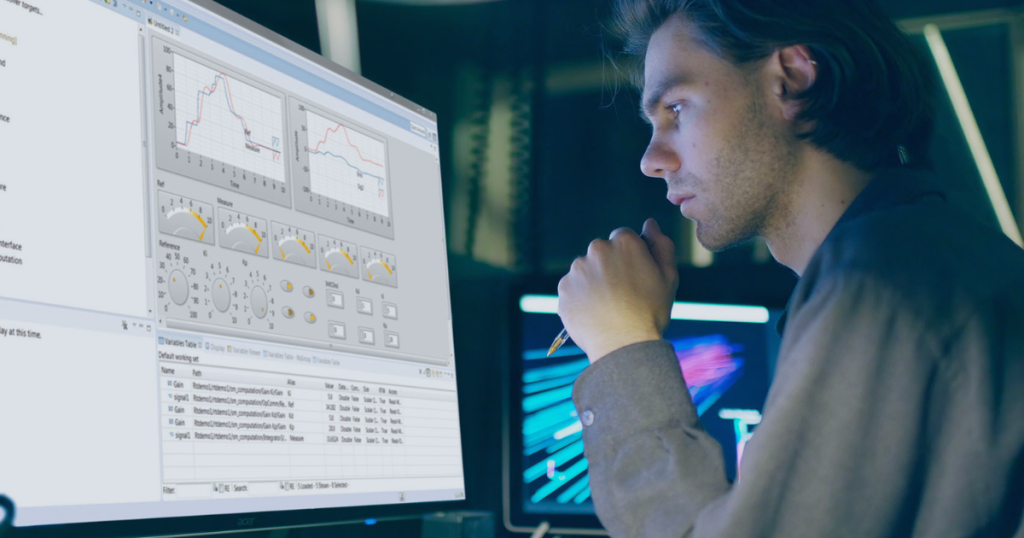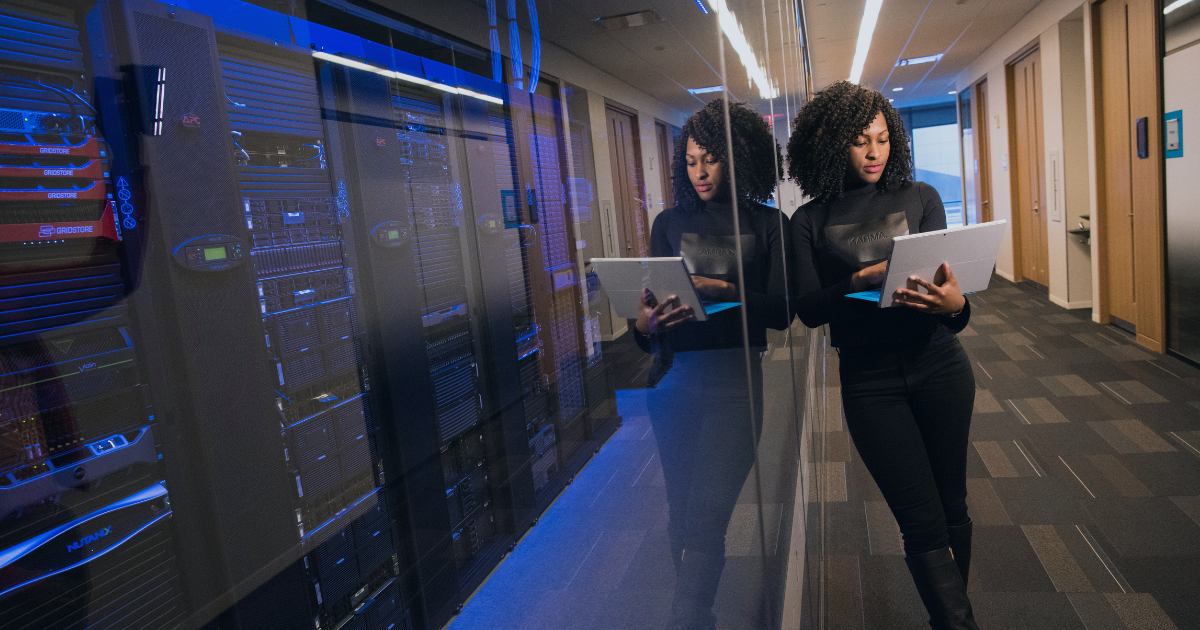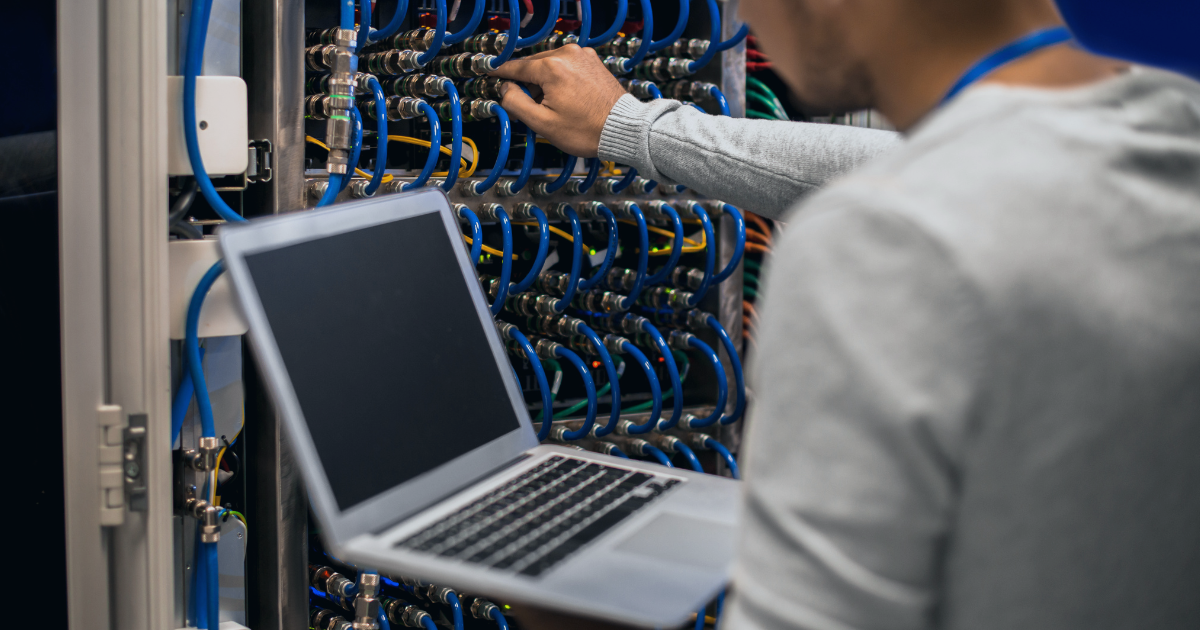
Key takeaways
- Digital twin simulation helps data centre teams predict system performance, reduce downtime, and improve efficiency with confidence.
- Predictive insights from real-time models lead to smarter capacity planning, energy savings, and better sustainability tracking.
- Testing and validating power and cooling logic virtually removes risk from commissioning and operational changes.
- Shared simulation platforms improve collaboration between design, operations, and leadership teams through verified, evidence-based insights.
- Selecting the right digital twin platform requires attention to real-time performance, openness, scalability, and accuracy.
A precise digital twin turns your data centre from guesswork to proof. Power, cooling, and IT infrastructure interact in ways that are hard to see with spreadsheets or static models. Teams need a safe way to test changes, quantify risk, and defend decisions before touching hardware. That is exactly where real-time simulation and high-fidelity models remove uncertainty and shorten the path from idea to validated plan.
Your operations team deals with firmware, control logic, and facility constraints that rarely line up. A digital twin lets you rehearse maintenance, cooling changes, and expansions without risk. It shows how a failure travels through power chains, how workloads shift heat, and where margins run thin. With clear insight, you can plan with confidence, tune performance, and lower cost.
Understanding how digital twin simulation supports data center operations

A data centre digital twin is a living software model that mirrors your facility’s power, cooling, and control systems using physics-based models tied to operational data. Digital twin simulation blends historical telemetry, real-time points, and synthetic scenarios to predict behaviour under load, failure, and maintenance. Engineers can adjust setpoints, firmware, topologies, and workloads in the model, then compare results against ground truth. The outcome is a validated way to test ideas before impacting uptime, safety, or service-level targets.
Modern twins ingest data through standard protocols, and they represent control logic at the device, system, and supervisory levels. The model can include power electronics, thermal dynamics, and network effects, then link to capacity and cost models for richer analysis. Hardware-in-the-loop (HIL) connects actual controllers to the simulated plant so you can exercise protection schemes, PLC sequences, and failover logic with full timing fidelity. The result is a digital environment that supports daily operations while creating a shared reference for engineering, facilities, and IT.
A precise digital twin turns your data centre from guesswork to proof.
9 key benefits of digital twin technology for data centers
Practical value matters more than buzzwords, so the strongest gains come from measurable outcomes in energy, uptime, and capacity. A well-scoped data centre digital twin helps teams see interactions that are invisible in siloed tools. You get traceable evidence for changes, fewer surprises during rollouts, and a clearer business case for upgrades. Stakeholders gain a single source of truth that connects physical limits, operational policy, and financial goals.
1) Improves power usage effectiveness and thermal management
Energy efficiency rises when you can predict how heat loads shift, how air moves, and how equipment responds to control changes. A calibrated twin estimates power usage effectiveness under seasonal conditions, then shows how airflow strategies and setpoints affect both costs and headroom. You can compare hot aisle containment, supply temperature bands, and fan laws without touching a single rack. The same model links cooling choices to IT performance so you can protect reliability while trimming kilowatt-hours.
Thermal models range from coarse room-level views to finer rack and tile detail that capture recirculation and leakage. The twin guides placement of sensors and computational fluid dynamics refinements where they pay off most. Control teams can test staged setpoint adjustments, economizer usage, and pump curves to keep temperatures within targets while avoiding oscillation. Over time, you build playbooks that align power, cooling, and workload scheduling for consistent efficiency.
2) Reduces downtime through predictive maintenance

Unexpected outages often originate from subtle warning signs that get missed in busy operations. A twin correlates vibration, temperature, and electrical indicators with equipment health, then projects time-to-failure windows for critical assets. Teams can simulate the effect of taking a unit offline, moving load, or switching feed, which reduces the risk of cascading issues. Maintenance becomes planned, short, and well understood instead of reactive.
As models learn from incidents, failure signatures become clearer, and thresholds turn into scenario-aware alerts. The twin helps decide which spare to stock, which component to refurbish, and what window to request for work. You can rehearse lockout steps, confirm interlocks, and verify safe states before a technician touches the floor. That reduces mean time to repair, improves safety, and preserves service quality.
3) Enhances capacity planning and infrastructure optimization
Capacity planning improves when you combine physics with business forecasts. The twin maps growth to power chains, distribution segments, and white space, then flags bottlenecks before they become blockers. You can evaluate new racks, higher-density servers, or power-path changes without a site visit. Results roll up into clear choices that balance headroom, risk, and spend.
Infrastructure optimisation also benefits from discovering stranded capacity. Models expose where airflow is wasted, where breakers pinch expansion, and where UPS runtime ends sooner than expected. You can test modular upgrades, revised cable routes, or staged power-topology changes to unlock usable capacity. Those findings shorten planning cycles and keep runway aligned with programme targets.
4) Strengthens risk mitigation and failure prevention strategies
True resilience comes from understanding how faults propagate across systems. A twin lets you test single and concurrent failures across feeds, transfer schemes, cooling loops, and control layers. You can verify that N plus 1 actually covers the most probable events, and that N plus 2 is reserved for edge cases. The model also highlights hidden couplings that make maintenance windows fragile.
Prevention improves when safeguards are validated against realistic dynamics. Protection settings, alarm priorities, and sequence timers can be tuned against simulated disturbances without exposing the site. Teams can drill on response procedures, confirm communications paths, and prove that failbacks complete cleanly. Governance improves because risk is documented with evidence, not assumptions.
Prevention improves when safeguards are validated against realistic dynamics.
5) Supports scenario testing before deployment
Rolling out new firmware, control logic, or setpoints is safer when tested against a faithful plant model. The twin gives developers, facilities, and IT a shared rehearsal space to vet changes under stress, noise, and corner cases. You can inject sensor faults, delayed messages, or timing jitter to see how the system behaves. Results help adjust margins, improve diagnostics, and catch regressions early.
Hardware-in-the-loop brings the highest confidence before touching production. Real controllers run their actual code against simulated power and cooling plants at full timing fidelity. Teams can step through cutover plans, watch state machines, and confirm interlocks without risk. Field deployment becomes a well-practised change rather than a leap of faith.
6) Streamlines commissioning and validation workflows
Commissioning often runs long because surprises surface late. A digital twin reduces that pain by moving discovery into the lab phase, where fixes are cheaper and faster. You can validate sequences, alarms, and trip curves virtually, then show evidence during site acceptance. That removes guesswork from punch lists and shortens time to steady-state operation.
During upgrades, the twin serves as a regression bench for integrated checks. You can compare current behaviour to last year’s baseline and prove that safety margins remain intact. Vendor packages can be exercised against known scenarios to confirm conformance before arrival. Traceable records support compliance, warranty claims, and future audits.
7) Improves collaboration between design and operations teams

Misunderstandings shrink when everyone looks at the same model, with the same assumptions, and the same metrics. The twin gives design and operations a visual, testable reference for change proposals and runbooks. You can attach cost, risk, and performance metrics to each scenario so trade-offs are explicit. Stakeholders sign off on plans with shared confidence.
Feedback flows in both directions once a twin is part of the daily toolkit. Operators flag issues that designers can test immediately, and designers hand back validated changes that operators can trust. Knowledge stops living in individual spreadsheets and starts living in a shared asset that outlasts staffing changes. That continuity improves consistency across shifts, projects, and fiscal years.
8) Optimizes lifecycle cost and sustainability goals
Energy cost, maintenance, and asset life add up across years, not weeks. The twin brings these elements into one model so you can weigh near-term savings against long-term impact. You can compare containment upgrades, variable speed retrofits, or chilled-water changes using measured weather, tariff, and workload profiles. Results point to the mix that balances carbon, cost, and reliability.
Sustainability targets benefit from visibility into avoidable losses. The model quantifies how heat reuse, free-cooling hours, or battery strategies change emissions intensity. Procurement teams get solid evidence for investment cases, and facilities teams get clear operating guidance. Progress becomes measurable, repeatable, and aligned with corporate reporting.
9) Accelerates digital progress through simulation insights
Data without context is hard to act on. A well-integrated twin connects logs, telemetry, and models so patterns turn into operational guidance. You can ask precise what-if questions and get answers that carry timing, physics, and cost. That supports faster cycles from problem to fix.
Teams also gain a platform for continuous improvement. New analytics, control ideas, or machine learning features plug into a known reference without breaking trust. Open interfaces keep you free to integrate the tools your engineers prefer, and to scale across labs and sites. As capability grows, the twin remains the reliable anchor for decisions that affect uptime and safety.
Four sentences of closure tie the benefits together without restating the list. Decisions get faster because people agree on evidence, not opinions. Risk drops because changes are rehearsed before rollout. Cost trends improve because energy, maintenance, and capacity are steered with better foresight.
Selecting the right digital twin platform for your data center goals
A platform choice shapes the value you can extract over years of growth, retrofits, and staffing changes. Teams need real-time performance for HIL work, plus the flexibility to model power, thermal, and controls with high fidelity. Integration with existing tools, data historians, and analytics pipelines keeps your workflow efficient. Governance, security, and usability must be strong enough to support daily use across roles.
- Real-time performance and fidelity: Confirm that simulation timing is deterministic, and that electrical and thermal models run with the detail your tests require. Look for demonstrated millisecond or sub-millisecond loop rates when you plan to connect controllers.
- Open integration: The platform should support standard protocols, FMU exchange, and Python for automation. Avoid closed stacks that slow down data exchange or lock you into a single vendor workflow.
- Scalable architecture: Capacity should grow from a single lab bench to multiple facilities without rework. Check how models, assets, and users are managed across projects, sites, and teams.
- Hardware-in-the-loop readiness: Verify support for real controllers, protective relays, PLCs, and supervisory systems. Request proof of precise I/O timing, fault injection, and safe state handling.
- Model breadth and accuracy: Ensure the library covers power electronics, distribution, HVAC, and control logic at the right level. Calibrating to measured data should be straightforward, repeatable, and well documented.
- Security and data sovereignty: Expect robust role-based access, audit trails, and options for on-premise deployment. Clarify how sensitive operational data is stored, processed, and shared.
- Usability for mixed teams: Interfaces should work for control engineers, facilities staff, and data analysts without heavy retraining. Look for clear debugging views, scenario management, and version control that fits engineering practice.
Clarity on these points avoids expensive pivots after pilots conclude. A good fit supports near-term goals like commissioning, while keeping the door open for advanced analytics later. Your engineers stay productive because the platform aligns with how they already test and automate. Leadership gains confidence because outcomes are traceable, repeatable, and tied to measurable targets.
How OPAL-RT supports digital twin simulation for high-performance data centers

OPAL-RT provides real-time digital simulators and software that let engineers exercise power and cooling control logic against high-fidelity plant models. Teams can connect protective relays, PLCs, and supervisory systems to a simulated facility using Hardware-in-the-loop (HIL), then validate trip logic, sequence timers, and failover plans at full timing fidelity. The ecosystem supports FMI/FMU exchange and Python automation, which helps you blend vendor models, in-house scripts, and lab workflows. Engineers get a practical way to evaluate firmware, test operating policies, and shorten commissioning windows without risking production.
For power and thermal studies, OPAL-RT platforms model distribution segments, converters, and thermal dynamics with the precision required for protection and control testing. RT-LAB integrates with commonly used modelling tools, so teams can reuse assets and build on prior work. Open interfaces support historian links and analytics, which keeps results aligned with operational data and cost models. Engineers across power systems, controls, and test labs rely on OPAL-RT for performance you can measure, service you can reach, and a roadmap you can trust.
Common questions
Clear answers help stakeholders align on scope, budget, and outcomes before the first model is built. Teams often ask about definitions, accuracy, and how digital twin simulation fits into existing processes. The most helpful guidance connects technology choices to uptime, efficiency, and safety. The short responses below address common points that shape planning and adoption.
What is a data center digital twin?
A data center digital twin is a software model that mirrors your facility’s power, cooling, and control systems, validated against real measurements. The twin runs scenarios such as load swings, equipment faults, and maintenance steps to predict behaviour and risk. Teams use it to test changes, estimate energy impact, and verify protection and automation before deployment. The result is fewer surprises on the floor and clearer evidence for decisions.
What does digital twin data center mean?
The phrase digital twin data center refers to applying digital twin methods to the facility and its operations rather than to a single device. It brings together power distribution, cooling loops, and supervisory control within one coherent model. The model stays current by syncing with telemetry, alarm data, and configuration baselines. That continuous alignment makes it useful for planning, commissioning, and daily operations.
How does digital twin simulation help with data centers?
Digital twin simulation helps data centres reduce risk, improve efficiency, and plan capacity with higher confidence. You can try out firmware, control sequences, and setpoints virtually, then deploy only what passes strict tests. Energy and thermal models quantify savings opportunities while protecting reliability targets. Evidence from the twin supports approvals, change control, and cross-team alignment.
How accurate are power and thermal models in a digital twin?
Accuracy depends on model fidelity, data quality, and calibration discipline. Well-built twins use physics-based models, include measured parameters, and are tuned against site data over time. Uncertainty is documented so stakeholders know where margins are generous and where they are tight. Governance processes keep models current as equipment, firmware, and operating policies change.
Do you need hardware-in-the-loop for a data centre digital twin?
Hardware-in-the-loop (HIL) is not always required, but it adds strong assurance when testing protection, PLC sequences, or time-critical control. Running actual controllers against a simulated plant exposes timing issues, race conditions, and integration bugs that pure software misses. Teams can practise cutovers, validate interlocks, and confirm alarms without any production impact. Many programmes start with software-only studies, then add HIL for commissioning and high-risk changes.
Clear expectations speed up adoption and reduce wasted effort. Teams that align on scope, fidelity, and test coverage get value sooner and with less rework. A shared vocabulary keeps engineering and operations focused on outcomes, not tooling debates. Good governance turns early wins into a durable practice that supports reliability, efficiency, and growth.
EXata CPS has been specifically designed for real-time performance to allow studies of cyberattacks on power systems through the Communication Network layer of any size and connecting to any number of equipment for HIL and PHIL simulations. This is a discrete event simulation toolkit that considers all the inherent physics-based properties that will affect how the network (either wired or wireless) behaves.


